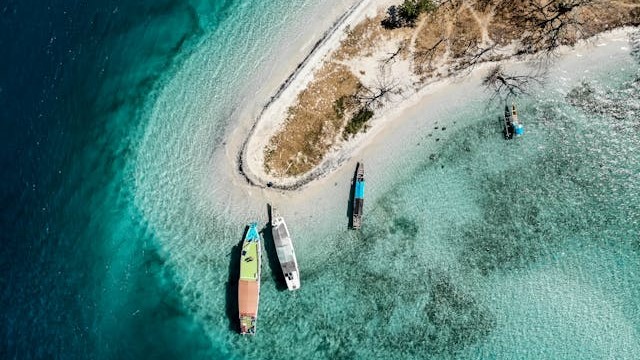By Aisha Salon Mtsapwé
MOHÉLI, COMOROS — As dawn breaks on the azure seas of the Comoros Archipelago, fishermen untangle nets shaded by glistening coral reef—once threatened, now vibrant. This resurgence is no accident: the Union of the Comoros has become a regional exemplar in ocean protection, weaving local tradition with scientific know‑how and inspiring a broader blue‑economy vision.
“This is not just conservation—it’s cultural renewal,” says Salim Ben Ali, a park ranger known affectionately as “Rambo.” “Protecting the reef means preserving our identity.” adventure.com+1swisscetaceansociety.org+1
Building a Blue Legacy
In 2001, Mohéli Marine Park—now Mohéli National Park—became the country’s first protected marine space. It conserves mangroves, coral reefs, sea‑grass beds, and a remarkable array of wildlife: green and hawksbill turtles, dugongs, coelacanths and migratory whales.
The park’s management is deeply participatory: communities patrol for illegal fishing, monitor turtle nesting, and help enforce coral‑safe practices. Nesting green turtles number about 30,000 landings each year, making it one of the world’s most important breeding sites.
Expanding Conservation Footprints
Buoyed by Mohéli’s success, Comoros has established Shisiwani National Park (Anjouan) and Coelacanth National Park (Grande Comore)—a bold move toward protecting 25 percent of land and sea by 2021.
Science is also playing a growing role. Through partnerships supported by CEPF and the Nairobi Convention, researchers are mapping deep‑reef corals and collecting biodiversity data to guide marine zoning and safeguarding efforts.
Mobilizing Communities—and the Region
Local stewardship remains central. Village associations and women’s groups are integral partners in turtle hatcheries and reef monitoring—efforts backed by NGOs like IUCN and Wetlands International.
On the policy front, the country has embraced the blue economy—an approach championed at regional forums like the UNDP‑led Moroni Declaration—and is exploring a pioneering debt‑for‑nature swap under the “Great Blue Wall” initiative.
The European Union and UNDP are also investing in marine governance reforms and infrastructure at the port of Moroni, reinforcing sustainable fishing and coastal protection.
A Model for Resilience
This flourishing web of conservation has created economic and environmental resilience. Tourism is growing—both through eco‑lodges in Itsamia and guided whale‑watching expeditions. The resulting revenue supports schools, trappings of cultural pride, and expands enforcement budgets.
“Once, people thought conservation meant no access,” says Dr. Fatima Salim, a marine biologist in Moroni. “Now they see it means long‑term sovereignty over our seas.”
A Beacon Amid a Changing Climate
Climate change and pollution threaten many small island nations—but Comoros stands apart. Its collaborative framework—among government, local guardians, and international support—illustrates a scalable model for ocean stewardship across the Western Indian Ocean.
From protected parks to community patrols, the Comoros are showing the world that safeguarding the sea is not a retreat—it’s a leap forward.
Sources:
- [Mission Blue – Mohéli Hope Spot]news.mongabay.com+1intrepidtravel.com+1adventure.com+3cbd.int+3afrodiscovery.com+3cbd.int+9missionblue.org+9news.mongabay.com+9
- [UNDP – Biodiversity in Comoros]undp.org+1undp.org+1
- [World Bank Blog – Community‑Managed Fisheries in Comoros]blogs.worldbank.org+1intrepidtravel.com+1
- [IUCN – ReSea Project in Comoros]iucn.org
- [European Commission – Comoros Blue Economy]missionblue.org+15international-partnerships.ec.europa.eu+15uneca.org+15


